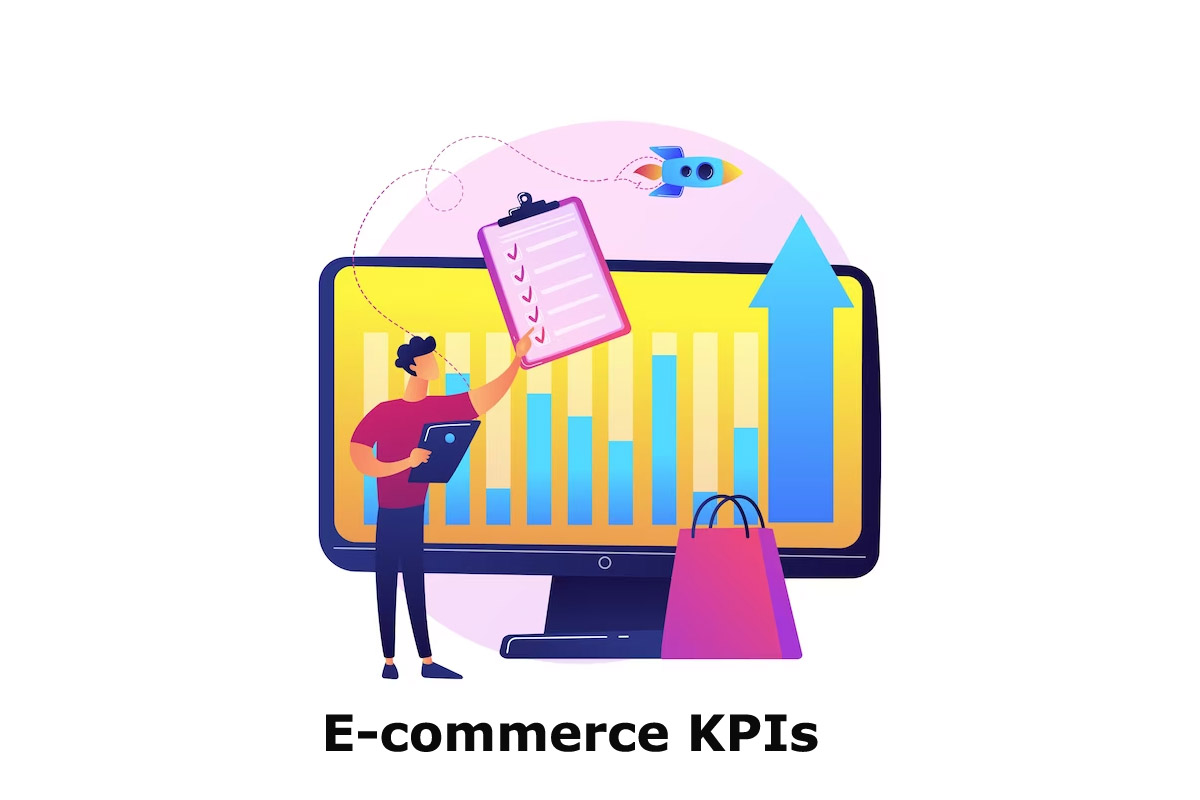E-commerce KPIs
E-commerce KPIs are the crucial indicators that will show the performance of your online business against your set plans and goals. They will give you insights into the strategic decision you made for your business. Tracking e-commerce KPIs will help you make informed decisions that will help achieve goals like getting more traffic, enhancing conversions, customer satisfaction, and marketing effectiveness.
Remember that the choice of e-commerce KPIs may vary based on the business model, goals, and industry. Regularly monitoring and analyzing these KPIs can help e-commerce businesses make data-driven decisions and optimize performance.
How to Choose E-commerce for Your Business?
So many KPIs are available online, but you can still use them for your business. So when we talk about choosing an E-commerce KPIs for your business, you need to focus on the ones that provide valuable data. We’d like to see briefly how we can do it.
Line Up KPI with your Business Goals: Using KPI should directly impact your business and support your business strategy. It should reflect your overall performance and help you track your business progress and success.
Work on Measurability: The KPI is the best way to measure your business progress and results. The results you get should be understandable to you and your team.
Consider your Growth Stage: KPI changes will depend on your business’s growth. If you are a start-up, expansion, or other phases depending on it, you need to choose your KPI. I think keeping your KPI according to your business will be helpful. Only follow others if you want to go with the trends. It can ruin the results.
Keep it Simple yet Effective: As it is said, less is more. Please don’t keep track of any KPIs that will waste your time and energy. The KPI that will give you relevant insights is suitable for your business.
Some Common Examples of E-Commerce KPIs
- Conversion Rate: This KPI measures the percentage of website visitors who complete a chosen action, such as purchasing or signing up for a newsletter. A high conversion rate indicates effective marketing and a user-friendly website.
- Average Order Value: AOV measures the average amount customers spend in a transaction. Increasing the AOV can lead to higher revenue without necessarily attracting more.
- Customer Acquisition Cost: This KPI calculates the average cost of acquiring a new customer. It helps assess the efficiency of marketing campaigns and customer acquisition strategies.
- Customer Lifetime Value: CLV predicts the total revenue a business can expect from an individual customer over the entire duration of its relationship with the company. A higher CLV indicates strong customer loyalty.
- Return Rate: This KPI tracks the percentage of orders that result in returns. A high return rate might indicate issues with product quality or fulfillment processes.
- Website Traffic: Measuring the total number of visitors to the website helps assess the effectiveness of marketing efforts and brand awareness.
- Bounce Rate: The bounce rate characterizes the percentage of visitors who leave the website after seeing only one page. A high bounce rate could indicate that the site needs to meet visitors’ expectations.
- Customer Satisfaction and Net Promoter Score: These measurements show customer satisfaction and the likelihood of customers recommending the business to others. Satisfied customers are more likely to become faithful and generate word-of-mouth referrals.
More Examples of E-Commerce KPIs
- Inventory Turnover Rate: This KPI measures how quickly inventory is sold and replenished. A high turnover rate indicates efficient inventory management.
- Mobile Conversion Rate: With the increasing use of mobile devices, tracking the conversion rate, specifically on mobile platforms, is crucial.
- Time on Website: This KPI measures visitors’ average time on the website. Longer time on site suggests engaging content and user experience.
- Social Media Engagement: For e-commerce businesses with a social media presence, tracking likes, shares, comments, and click-through rates can provide insights into brand engagement.
- Email Open and Click-through Rates: For e-commerce businesses that utilize email marketing, these metrics help assess the effectiveness of email campaigns.
Conclusion
Remember that the choice of e-commerce KPIs may vary based on the business model, goals, and industry. Regularly monitoring and analyzing these KPIs can help e-commerce businesses make data-driven decisions and optimize performance.

